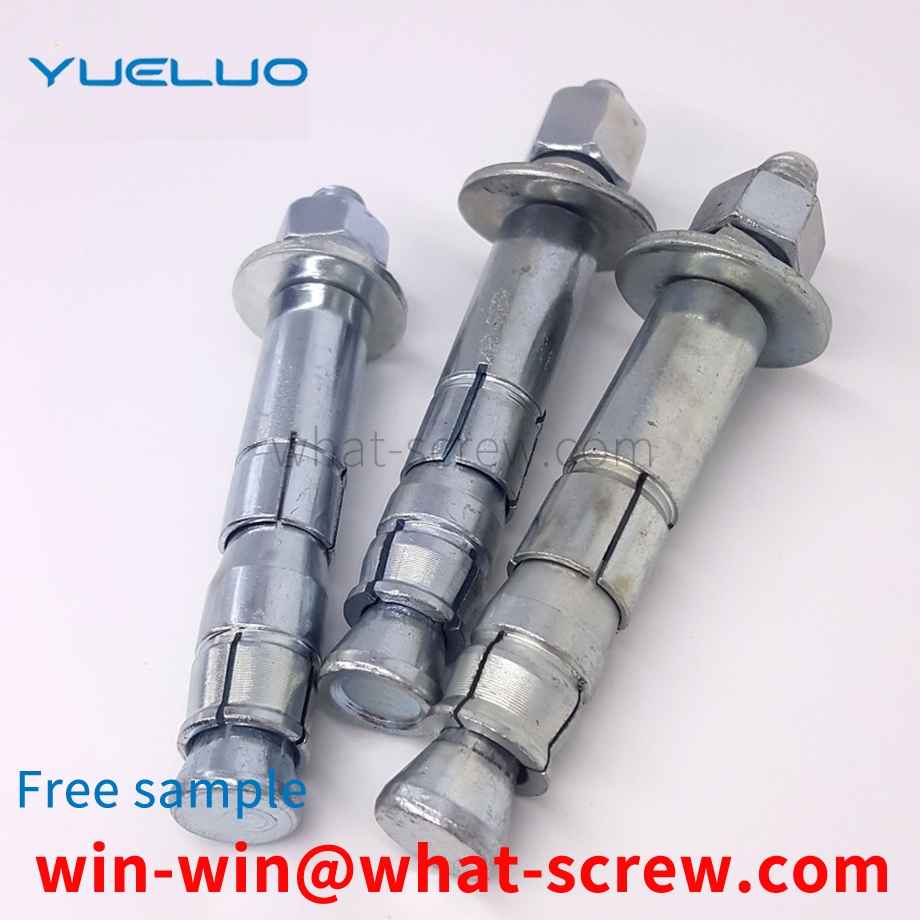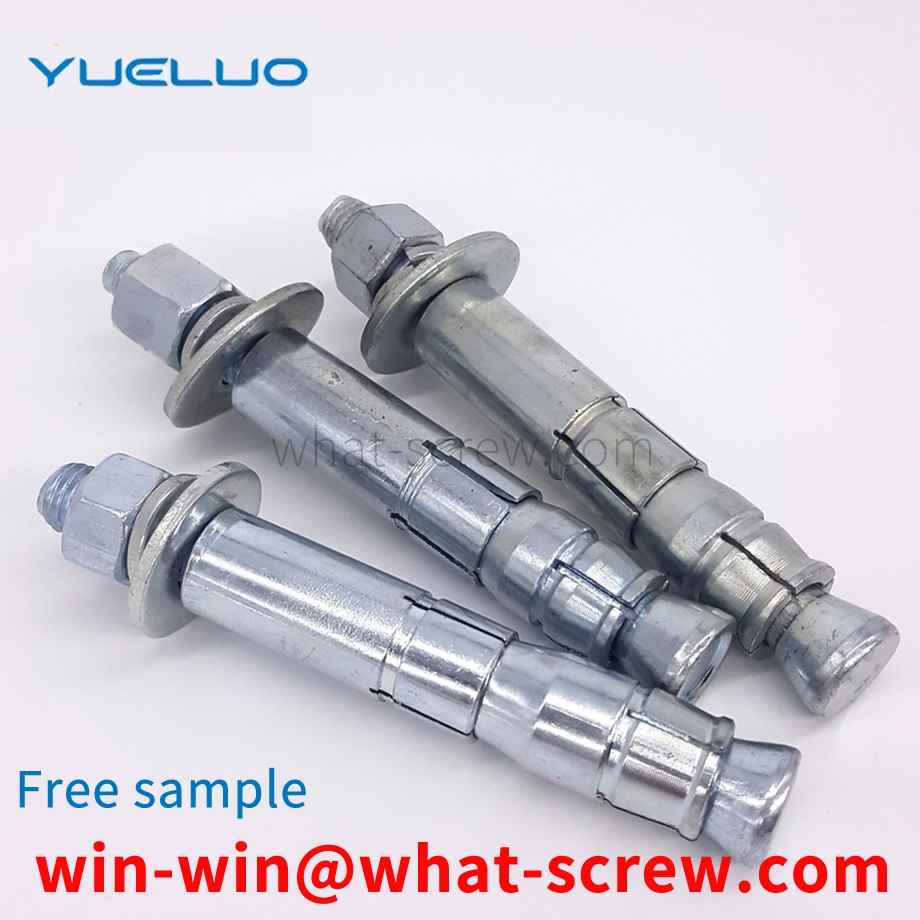Half round head rivets are mainly used for riveting occasions with large lateral loads, and are the most widely used. Flat cone head rivets are often used in riveting occasions with strong corrosion such as ship hulls, boiler water tanks, etc. Countersunk head and 1200 countersunk head rivets are mainly used for riveting occasions where the surface must be smooth and the load is not large. Half countersunk head and 1200 half countersunk head rivets are mainly used for riveting occasions where the surface must be smooth and the load is not large. Flat head rivets are used for riveting occasions with general load. Flat head and flat head rivets are mainly used for riveting of metal sheets or non-metallic materials such as leather, canvas and wood. Large flat head rivets are mainly used for riveting of non-metallic materials. Semi-hollow rivets are mainly used for riveting occasions with small loads. Headless rivets are mainly used for riveting of non-metallic materials. Hollow rivets are light in weight and weak in head, and are used for riveting of non-metallic materials with small loads. Tubular rivets are used for riveting of non-metallic materials without load. Nameplate rivets are mainly used for riveting nameplates on machines and equipment.
Combination bolts refer to a bolt with a spring washer and a flat washer, which are combined by rubbing teeth. Before the combination bolt is used, the bolt, the spring washer and the flat washer are generally combined by a specific machine. The combined production line mainly includes the processes of feeding, discharging, feeding, charging, screwing and tightening. The existing combined bolt production equipment mainly transmits the bolts to each process through the conveyor belt, and finally completes the combined assembly. The machines in each process are scattered and the space is occupied. The vibrating plate feeding generally puts the bolt head up, and its bolts, spring washers, etc. After the flat pad is assembled, the fixation is poor, and it is easy to fall off during the assembly process.
Sometimes, the iron screws are often seen broken, and sometimes, the stainless steel screws are also seen broken. But generally speaking, stainless steel screws rarely break. Because the stainless steel screw wire itself is relatively hard. But under certain circumstances, stainless steel screws can still break. So what are the main reasons for stainless steel screws to break? The reasons for the fracture of stainless steel screws are as follows: 1. The quality of raw materials used for stainless steel screws is poor, and the quality of stainless steel screws is not good. There are many impurities, impure, resulting in insufficient hardness of stainless steel screws. 2. The production process of stainless steel screws. For example, stainless steel screws with eccentric head and eccentricity, and the Q value is too deep and the R position design is too small during the down punching operation during production. 3. The customer uses too much force when using stainless steel screws. Generally, you do a torque test to see how much the minimum breaking force is, and then adjust the torque. Of course, stainless steel screws must be broken for more than three reasons. But the above three reasons are the main reasons for the fracture of stainless steel screws. When the stainless steel screw is found to be broken, it can be checked step by step. Find out what's causing it.
Washers are common parts that are annular or annular after compression. The existing standard washers include flat washers, spring washers, serrated lock washers, saddle washers, etc. The end faces are mostly flat or flat after compression. , so it is in surface contact with the workpiece. Generally, after the two workpieces are locked by washers, bolts and nuts, the workpieces cannot move in any direction, so as to achieve the purpose of tightening the two workpieces. In actual production, some workpieces are still required to be properly translated in a certain direction after locking. In order to achieve this requirement, the usual practice is to open a waist-shaped hole on the workpiece that needs to be moved, and the zigzag-shaped bushing is fitted with a flat washer after passing through the waist-shaped hole, as shown in FIG. The edge of the hole is located in the space enclosed by the bushing and the flat washer, and a gap is formed between the workpiece and the bushing and the flat washer, so that even if the bolt passes through the flat washer, the bushing and the workpiece in turn, it is threaded and locked with the nut. tight, the workpiece can still translate along the length of its girdle hole. Obviously, this method can achieve the requirement of proper translation of the workpiece, but the following deficiencies can still be found in the actual assembly. First, before locking, the bushing, washer and workpiece are separated from each other, so it is more inconvenient to assemble; secondly, the lining is The separation structure of the sleeve and the gasket is inconvenient to manage, and the disassembled gasket and bushing are easy to lose and affect the use again.
Locating pins are widely used in mechanical equipment and automated assembly lines. There are many types of locating pins, including fixed locating pins, replaceable locating pins, tapered locating pins, edged locating pins, standard diamond locating pins, spring locating pins, etc. The function is to limit the free movement of parts and objects. Users often choose different positioning pins according to the actual conditions of the parts, for example, according to the occasion of use, requirements and performance, etc., to reasonably choose positioning pins of different shapes and performances. At present, users usually use a combination of cylindrical pins and edge-cutting positioning pins as the positioning method for gripper positioning methods in automatic line accompanying tooling and automatic grasping.
We have many years of experience in the production and sales of screws, nuts, flat washers, etc. The main products are: natural 316 screws, square T-type sliders, IN949 stud bolts, double-way copper nuts and other products, we can provide you with suitable products for you fastener solutions.



















 Service Hotline
Service Hotline




